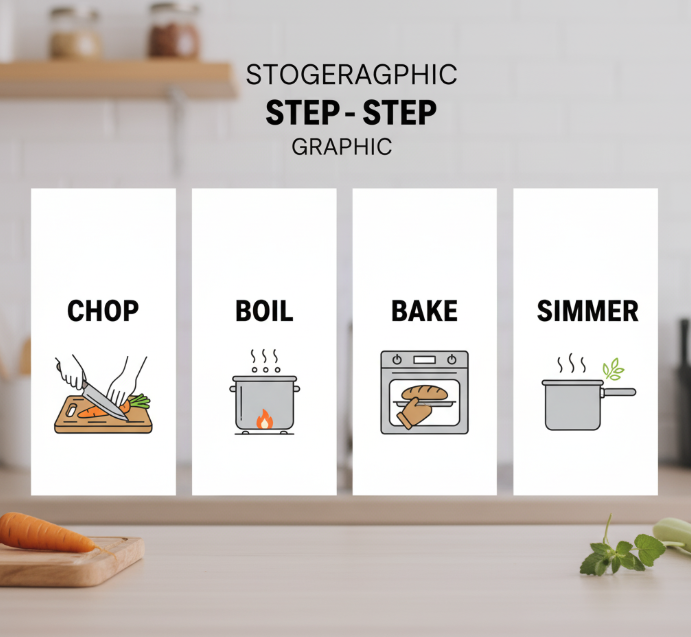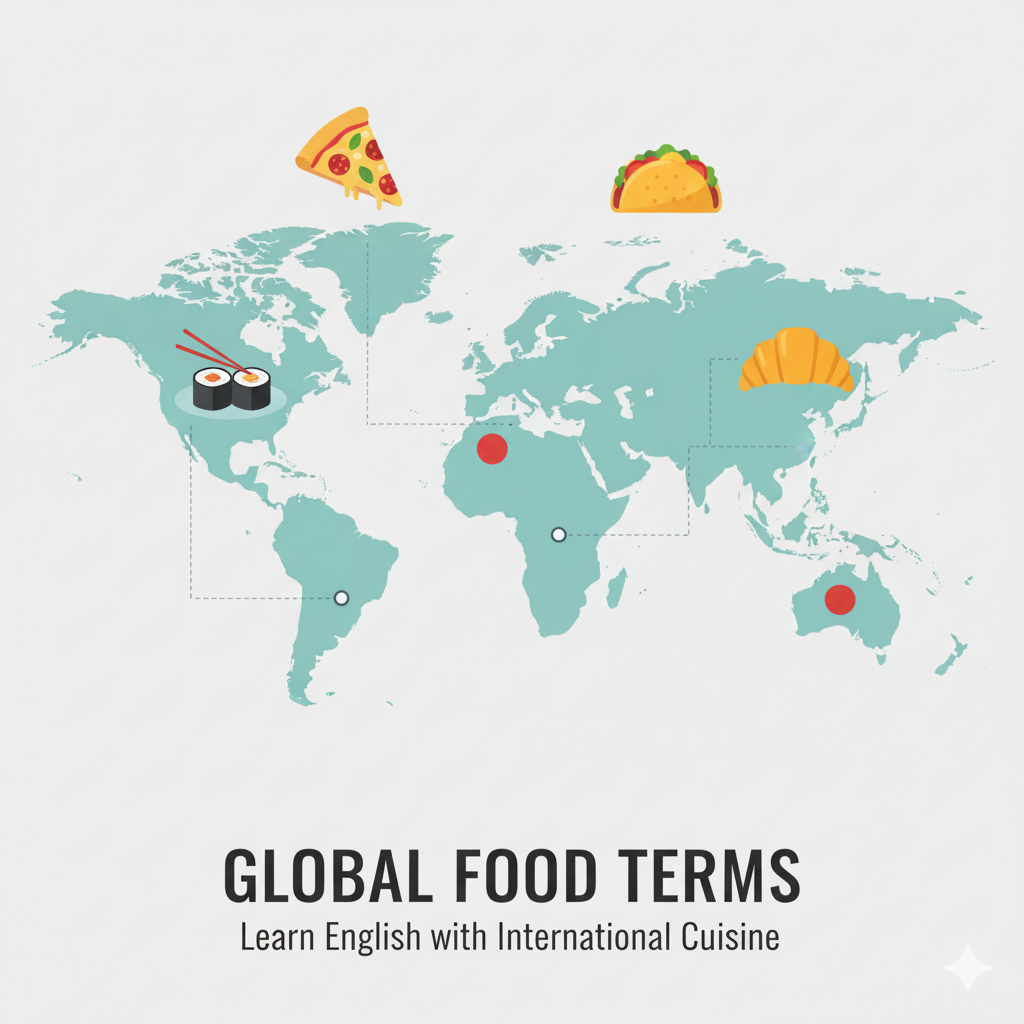Introduction
Let’s face it, nothing kills your appetite faster than staring at an English recipe you don’t understand—or worse, a restaurant menu abroad that looks like a secret code. You want to order confidently, but all you see are words like sautéed, poached, aioli, and suddenly, water feels like the safest option.

The truth? English food and cooking terms aren’t as scary as they look. Once you get the basics, you’ll feel right at home reading international recipes, following YouTube chefs, or ordering dinner without accidentally asking for something like fried frog legs. This guide is designed for food lovers, travelers, and English learners who want to feel comfortable with culinary English—without memorizing boring word lists.
Everyday Food Vocabulary You’ll Actually Use
If you remember just a handful of words, make it these. They appear everywhere: recipes, cafés, hotel menus, even cooking shows.
| Word | What It Means |
|---|---|
| Starter / Appetizer | The small dish before the main meal |
| Main Course / Entrée | The big, central dish |
| Dessert | The sweet ending (cake, ice cream, etc.) |
| Beverage | Drinks of any kind |
| Spicy | Hot flavor, usually chili |
| Grilled | Cooked on a grill or over open heat |
| Fried | Cooked in oil |
| Baked | Oven-cooked without extra oil |
| Steamed | Cooked using steam |
Learn these and you’ll avoid classic mix-ups. For example, knowing that entrée in American English means the “main dish” (not “starter” like in France) will save you from awkward surprises.
Curious about more “tricky English words”? You might like our piece on false friends in English and Turkish, which is basically a hall of fame for misunderstandings.
How to Read Recipes in English Without Guessing
Cooking instructions can feel like puzzle pieces. The verbs especially trip people up, so let’s untangle them:

- Chop → cut into rough, small pieces.
- Slice → thin, flat cuts (like bread or cucumber).
- Simmer → cook slowly in hot liquid, just below boiling.
- Boil → cook in fully bubbling water.
- Bake → oven-cook cakes, bread, pizza.
- Roast → oven-cook meat or veggies, usually with oil.
- Stir-fry → quick cooking in a pan with very little oil.
- Season → add salt, pepper, herbs, or spices.
Recipe example:
“Slice the onions, sauté them in butter, then add chopped tomatoes and simmer for 15 minutes.”
At first, these instructions can feel intimidating, but once you’ve cooked one or two meals using English recipes, you’ll start recognizing patterns. And if you’re still nervous, pairing this with tips from our post on phrasal verbs with get might give you extra confidence—since recipes love phrasal verbs.
Restaurant English: How to Order Without Panic
Travelers know this pain: the waiter is smiling, the menu is long, and your brain freezes. Here’s a quick menu survival kit.
Polite phrases to keep in your pocket:
- “Could I see the menu, please?”
- “I’d like the grilled chicken with rice.”
- “Can I have it without onions?”
- “What do you recommend?”
- “The bill, please.”
Mini-dialogue you can steal:
- Waiter: Good evening, are you ready to order?
- You: Yes, I’ll have the baked salmon with mashed potatoes, please.
- Waiter: Would you like a drink?
- You: Just sparkling water, thank you.
This type of English falls into what we call Travel English. And trust me: using even one or two polite phrases will instantly make you sound more confident.
International Menus: Words You’ll Meet Everywhere
Some words never get translated. You’ll see them written exactly the same whether you’re in New York, Tokyo, or Istanbul.

- Italian: pasta, risotto, bruschetta, tiramisu.
- French: croissant, soufflé, crème brûlée, ratatouille.
- Asian: sushi, ramen, dim sum, curry.
- Mexican: taco, enchilada, guacamole, quesadilla.
The beauty of these terms is that they travel well. If you know them, you’ll rarely go wrong—unless, of course, you pronounce bruschetta like “broo-shetta” instead of the Italian “broo-sketta.” (Yes, Italians do notice.)
Practical Tips to Learn Food Vocabulary Faster
Here’s the good news: learning cooking and menu terms is one of the fun parts of English. You don’t need grammar drills—you need exposure.
- Watch cooking shows in English (MasterChef, Jamie Oliver).
- Browse food blogs or YouTube recipes and pause when you hear a new word.
- Use flashcards for verbs like chop, simmer, bake.
- Visit international restaurants and challenge yourself to order in English.
- Use learning tools like our grammar checker or paraphraser to practice rewriting cooking instructions in English.
And remember, mistakes often turn into stories. A friend of mine once ordered “tongue stew” abroad, thinking it was beef. It was indeed beef—just… tongue.
Conclusion
Mastering English food and cooking terms isn’t about perfection—it’s about confidence. Once you know the basics, you’ll be able to follow recipes without guessing, order meals abroad without sweating, and actually enjoy the cultural side of food in English.
So next time you see grilled steak with sautéed mushrooms on a menu, you won’t hesitate—you’ll order like you’ve been doing it your whole life.
Which English food term surprised you the most? Drop it in the comments—I promise you’re not the only one who’s ever confused “entrée” with “starter.”
